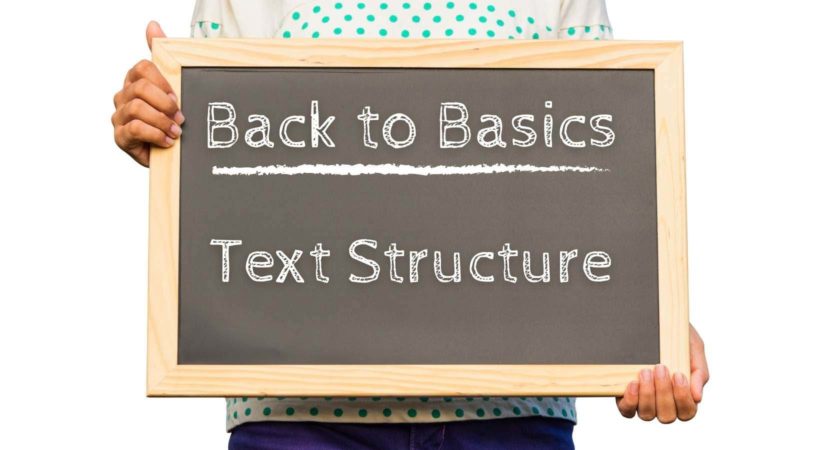
Back to Basics: Text Structure
Welcome to our Back to Basics series! In this series we explore some of the foundational methods, practices and terminology for teaching reading and writing. This series is for those new to the field of literacy, beginning tutors or those who would just like a refresher. This week we discuss the comprehension strategy of text structure.
Text structure refers to the way an author organizes information in a text to achieve a particular purpose. It’s the framework for the text’s beginning, middle and end. Different genres have different audiences and purposes, requiring unique text structures.
“Teaching students how texts are structured and organized and what features appear in different genres is essential to effectively understanding and communicating ideas in both reading and writing.” – The Balanced Literacy Diet
Recent research shows that a learner’s understanding of text structure helps with comprehension. Certain text structures are easier to learn than others. As learners advance with their reading and writing, the complexity of text structures increases. While understanding text structure is an important reading skill, it also enhances a learner’s writing abilities.
There are five common types of informational text structures:
- Description – detailed description of something to give the reader a mental picture.
- Sequence – a chronological list of events or a list of steps in a procedure.
- Cause and effect – causal relationship between a specific event, idea, or concept and the events, ideas, or concept that follow.
- Compare and contrast – examines the similarities and differences between two or more people, events, concepts, ideas, etc.
- Problem and solution – sets up a problem or problems, explains the solution, and then discusses the effects of the solution.
Check out this catchy song explaining the different kinds of text structure. It’s a little fast, so we recommend putting the subtitles on.
Effective supports for teaching text structure are graphic organizers, writing frames, text pattern signals and text previewing.
For more about text structures and how to teach them, check out the resources below.
Resources
Related Blog Posts
Video Lessons for Adult EAL Students
Find video lessons for adult EAL students on Janis’s ESL homepage.
History of the English Language
Learn how the history of English helps us understand some of the complexities of the language.
The Myth of Learning Styles
Learning styles are a popular myth about learning. They are widely accepted but there’s no evidence to support their existence.
